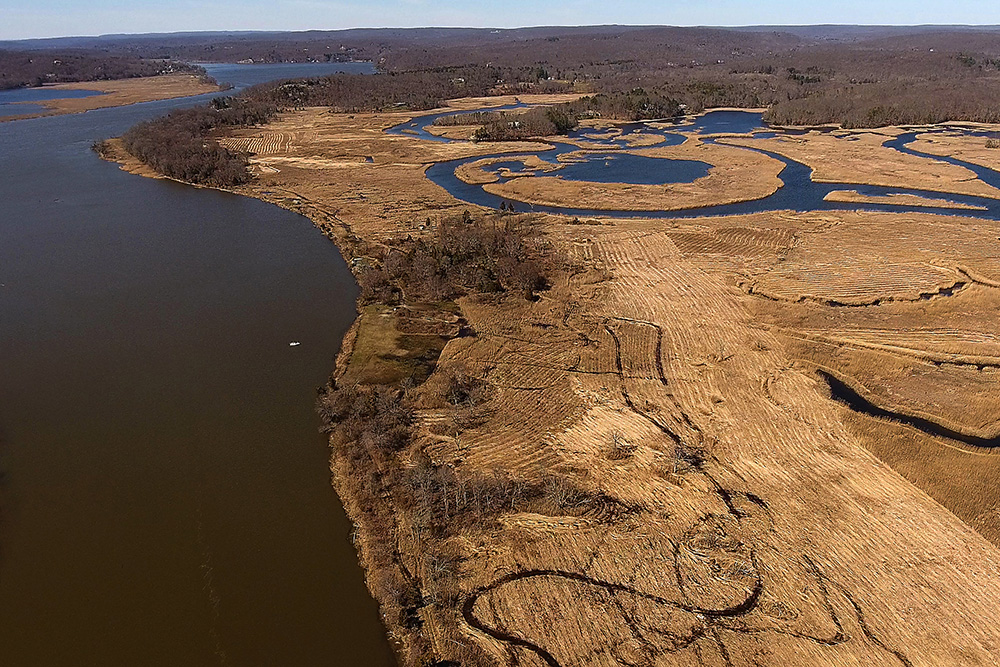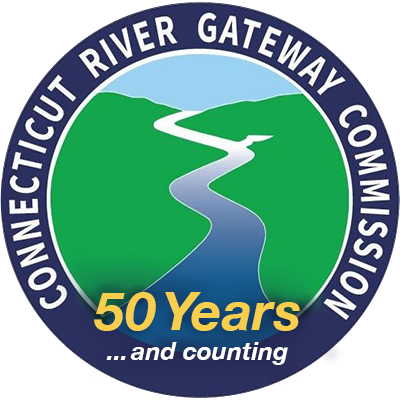Balancing Preservation & Development
Hamburg Cove & Eightmile River Tom Walsh, Shoreline Aerial Photography
The state legislature, in creating the Connecticut River Gateway Commission, recognized the importance of preserving the “natural and traditional riverway scene” for present and future generations.
Threats to the lower river valley include:
- Visual encroachment, i.e., structures that do not blend in or are out of scale with their surroundings, and designs that clash with their environment
- Excessive and unnecessary removal of trees to improve landowners’ views
- Water quality impacts from excessive changes to natural topography and impervious surfaces that contribute to storm runoff
- Negative impacts to the ecology of the river and its natural resources.

To address such threats while permitting “constructive development,” the legislature gave the Gateway Commission an important tool: the power to establish minimum zoning standards, including those that impact development design. This is a rare authority in Connecticut land use management.
Commission standards are designed to minimize the visual impact of development on the riverway scene. They address criteria such as the bulk appearance and height of structures, lot coverage and setback from the riverfront.
When the Commission feels new standards are necessary, it meets with member towns’ planning & zoning commissions and staff. By virtue of towns’ membership in the Gateway compact, standards are to be promptly adopted into their municipal regulations. Member towns are then expected to enforce these standards. Towns may, if they choose, enact more stringent standards than those established by the Commission.
Through this municipal zoning partnership, the Commission’s standards have become the land use law governing development within the Zone.
State law requires that no zoning, subdivision, or planning regulations can become effective in the Zone without the Commission’s approval.
Any request for variances of development regulations for land located within the Zone must come before the Commission to be reviewed for consistency with the Commission’s mission.
The Commission’s response usually takes one of three paths – opposition to granting a requested variance, no opposition, or no opposition if certain protective conditions are applied by a Zoning Board of Appeal.
In reviewing a variance request, the Commission’s responsibility is to address if there will be an adverse impact to the natural and traditional riverway scene.
In the event of the unlikely and rare appeal of a local decision, the Commission is considered to have automatic standing in any court proceeding. (Sec. 25-102h.)
Connecticut Law Authorizing the Gateway Commission and Commission Standards »


Maples, Oaks, Beech, Birch & Pine
Tree-lined riverbanks contribute greatly to the Connecticut River’s cherished “natural and traditional scene.” A coastline like that enjoyed by the sailor shown at left need not be found only in preserves. Riverfront landowners can enjoy great views and keep the lower river valley beautiful with simple tree pruning practices. “Limbing up” a tree’s lower branches, while leaving upper canopies untouched benefits everyone.
